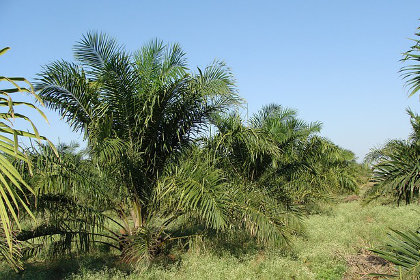
As the Global Demand for Palm Oil Surges, Indonesia’s Rainforests Are Being Destroyed
Tracts of land are being cleared to make way for palm plantations, releasing vast quantities of CO2 and giving poachers easy access to endangered Helmeted Hornbills.
September 19, 2016 | Source: Audubon | by Jocelyn C. Zuckerman
Tracts of land are being cleared to make way for palm plantations, releasing vast quantities of CO2 and giving poachers easy access to endangered Helmeted Hornbills.
I’d been led to this modest brick home in Aceh province, on the northern tip of Sumatra, by a local environmental activist named Rudi Putra. A 39-year-old with a faint goatee and a degree in conservation biology, Putra developed an early love for his native island’s iconic rhinoceros and now devotes his life to protecting it and the region’s other wildlife. It’s a calling that often involves run-ins with poachers like these. The men kill the Helmeted Hornbill for its unique casque, a solid- keratin enlargement on the upper part of the bill. Long prized by the Chinese when sculpted into snuff bottles and jewelry and ground into traditional medicines, the item has taken on new status in recent years, thanks in part to the growing difficulty of procuring elephant tusk. Putra understands the economic desperation that leads these men to shoot birds; rather than vilify them, he aims to steer them toward alternatives.
But poachers’ guns are just the latest threat to the archipelago that Putra calls home. Indonesia is ground zero for palm oil, a substance that, unbeknownst to most Americans, has quietly invaded our lives. Now present in half of all products on U.S. grocery store shelves—from crackers and ice creams to lotions and lipsticks—the cheap, versatile commodity also is on a precipitous rise in India, China, and beyond. Glob- ally, production of palm oil has doubled during the past decade, and is set to do so again by 2020.
Cultivation of the oil palm plant already has exacted a devastating toll on the birds of Indonesia (and of Malaysia, where most of the rest of the world’s oil palm is grown). Here on Sumatra, more than 75 percent of the 102 lowland-forest-dependent bird species are now considered globally threatened. And BirdLife International reports that 27 of the island’s 34 Important Bird Areas contain major tracts of just the sort of lowland forest prized by the industry.
